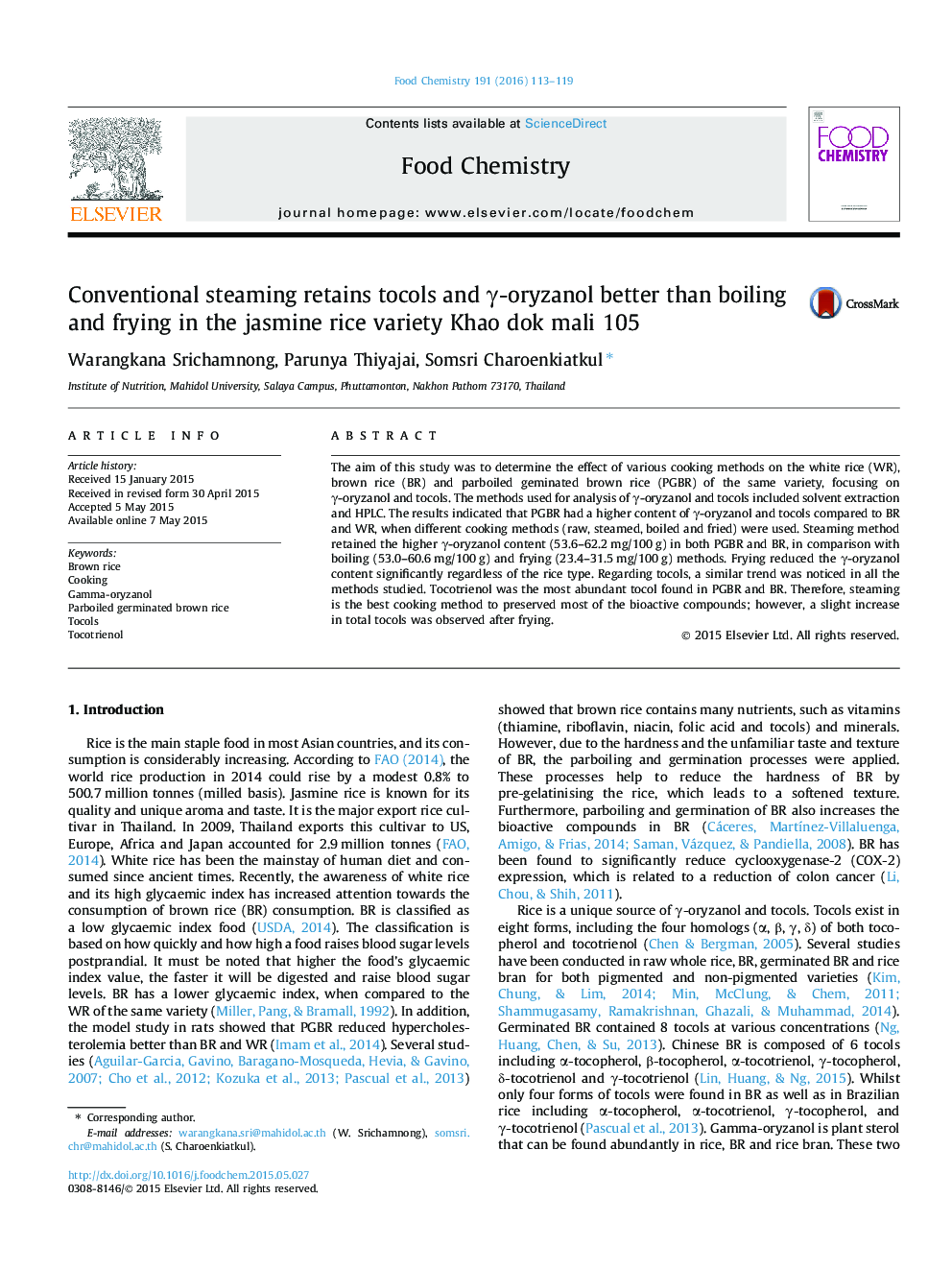| Article ID | Journal | Published Year | Pages | File Type |
|---|---|---|---|---|
| 7590186 | Food Chemistry | 2016 | 7 Pages |
Abstract
The aim of this study was to determine the effect of various cooking methods on the white rice (WR), brown rice (BR) and parboiled geminated brown rice (PGBR) of the same variety, focusing on γ-oryzanol and tocols. The methods used for analysis of γ-oryzanol and tocols included solvent extraction and HPLC. The results indicated that PGBR had a higher content of γ-oryzanol and tocols compared to BR and WR, when different cooking methods (raw, steamed, boiled and fried) were used. Steaming method retained the higher γ-oryzanol content (53.6-62.2 mg/100 g) in both PGBR and BR, in comparison with boiling (53.0-60.6 mg/100 g) and frying (23.4-31.5 mg/100 g) methods. Frying reduced the γ-oryzanol content significantly regardless of the rice type. Regarding tocols, a similar trend was noticed in all the methods studied. Tocotrienol was the most abundant tocol found in PGBR and BR. Therefore, steaming is the best cooking method to preserved most of the bioactive compounds; however, a slight increase in total tocols was observed after frying.
Related Topics
Physical Sciences and Engineering
Chemistry
Analytical Chemistry
Authors
Warangkana Srichamnong, Parunya Thiyajai, Somsri Charoenkiatkul,
